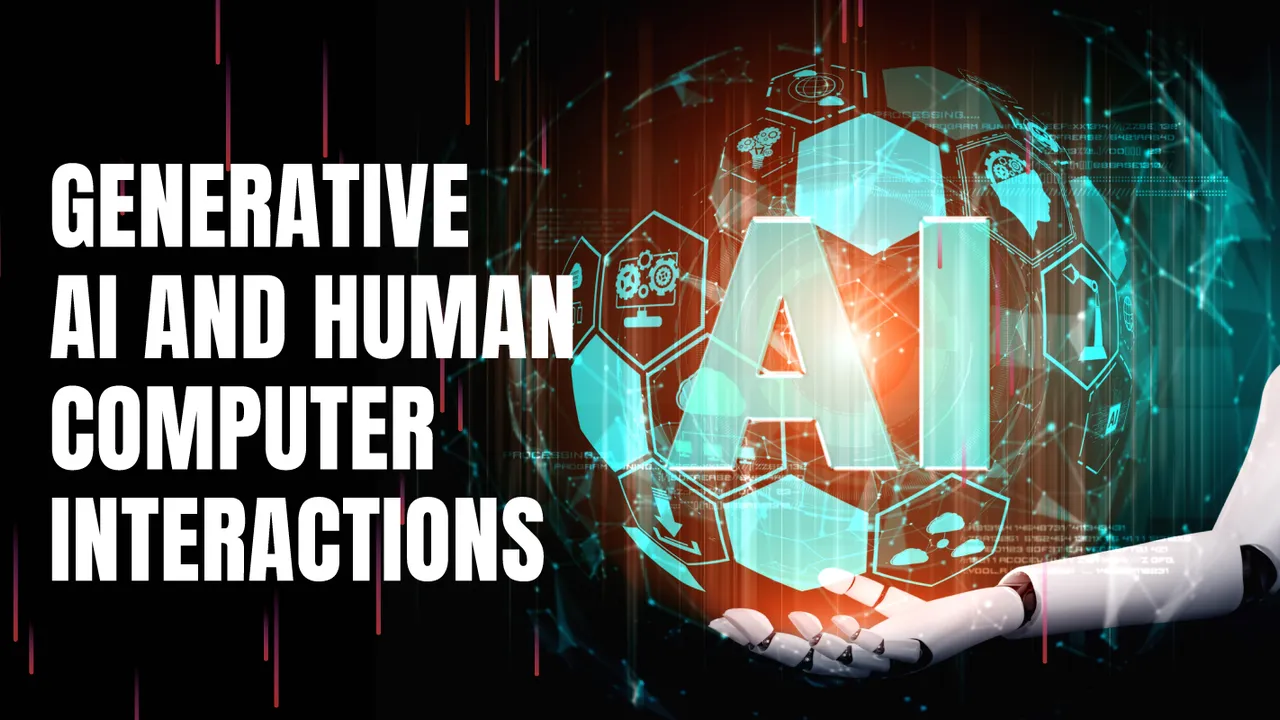AI and Human-Computer Interaction Evolution
Trace the development of more intuitive and natural interactions between humans and AI systems.

Trace the development of more intuitive and natural interactions between humans and AI systems.
AI and Human Computer Interaction Evolution
The Dawn of Human AI Interaction Early Interfaces and Their Limitations
Remember the early days of computing? We're talking command lines, cryptic syntax, and a steep learning curve. Human-computer interaction (HCI) back then was a one-way street, with humans doing most of the heavy lifting to communicate with machines. Fast forward to the advent of artificial intelligence, and the initial interactions weren't much different. Think expert systems that required precise, structured inputs, or early chatbots that could barely hold a coherent conversation. These systems, while groundbreaking for their time, were clunky, often frustrating, and certainly not intuitive. They demanded that humans adapt to the machine's language, rather than the other way around. This era was characterized by a focus on functionality over usability, where the power of AI was undeniable, but its accessibility was severely limited. Users needed specialized knowledge to even begin to tap into AI's potential, creating a significant barrier to widespread adoption. The limitations were clear: a lack of natural language understanding, rigid input requirements, and an inability to adapt to user preferences. This set the stage for a crucial evolution in HCI, driven by the promise of making AI truly accessible to everyone.
Natural Language Processing NLP Revolutionizing Conversational AI
The game truly changed with the rise of Natural Language Processing (NLP). Suddenly, AI could begin to understand and even generate human language. This was a monumental leap, moving us from rigid commands to more fluid, conversational interactions. Think about the impact of virtual assistants like Amazon Alexa, Google Assistant, and Apple Siri. These aren't just glorified search engines; they're conversational interfaces that allow us to interact with technology using our voices, just as we would with another human. This shift has made AI far more approachable and integrated into our daily lives. No longer do you need to type specific commands; you can simply ask a question or give an instruction. The underlying NLP models have become incredibly sophisticated, capable of understanding context, nuances, and even emotional tone. This has opened up a world of possibilities, from smart home control to hands-free navigation, and has fundamentally reshaped how we perceive and interact with AI. The continuous improvement in NLP is leading to even more seamless and natural conversations, blurring the lines between human and machine communication.
Comparing Leading Conversational AI Platforms
Let's dive into some of the leading conversational AI platforms that are shaping our interactions:
Amazon Alexa
Description: Alexa is Amazon's cloud-based voice AI service, powering devices like Echo smart speakers, Fire TV, and various third-party products. It's known for its vast ecosystem of 'skills' (voice apps) and its integration with smart home devices.
Use Cases: Playing music, setting alarms, controlling smart home devices (lights, thermostats), getting news updates, making calls, shopping on Amazon, and accessing a wide range of third-party services.
Key Features: Extensive skill library, robust smart home integration, multi-room audio, voice purchasing, and routines for automating tasks.
Pricing: The Alexa service itself is free, but it requires an Alexa-enabled device. Devices range from around $29.99 for an Echo Dot to $249.99 for an Echo Show 10. Many skills are free, but some may require subscriptions to third-party services.
Pros: Huge ecosystem, excellent smart home control, continuous feature updates, and a large user base for community support.
Cons: Can sometimes struggle with complex queries, privacy concerns due to always-on listening, and reliance on Amazon's ecosystem.
Google Assistant
Description: Google Assistant is Google's AI-powered virtual assistant, available on Android phones, Google Home/Nest devices, smart displays, and more. It leverages Google's vast knowledge graph and search capabilities.
Use Cases: Answering questions, providing directions, setting reminders, playing media, controlling smart home devices, sending messages, and integrating with Google services like Calendar and Gmail.
Key Features: Deep integration with Google services, excellent search capabilities, 'Continued Conversation' for natural follow-up questions, and 'Routines' for automated actions.
Pricing: Free to use on compatible devices. Google Nest devices range from $49.99 for a Nest Mini to $229.99 for a Nest Hub Max.
Pros: Superior knowledge base, natural language understanding, seamless integration with Android and Google services, and multi-user support.
Cons: Smart home integration can be less intuitive than Alexa for some devices, and some users find it less proactive than Alexa.
Apple Siri
Description: Siri is Apple's virtual assistant, integrated across all Apple devices, including iPhones, iPads, Macs, Apple Watch, and HomePod speakers. It focuses on privacy and seamless integration within the Apple ecosystem.
Use Cases: Sending messages, making calls, setting alarms, playing music, getting directions, controlling HomeKit smart home devices, and accessing app-specific functionalities.
Key Features: Strong privacy focus, deep integration with Apple apps and services, 'Siri Shortcuts' for custom voice commands, and on-device processing for some requests.
Pricing: Free with Apple devices. HomePod Mini is $99, and the HomePod (2nd Gen) is $299.
Pros: Excellent privacy features, tight integration with Apple's ecosystem, and good for basic tasks and app control.
Cons: Can be less capable than competitors for complex queries, limited smart home compatibility outside HomeKit, and sometimes struggles with understanding accents.
Beyond Voice Multimodal AI Interfaces and Sensory Integration
While voice has been a huge step forward, the evolution of HCI with AI doesn't stop there. We're moving towards multimodal interfaces, where AI can understand and respond to various forms of input simultaneously: voice, gestures, facial expressions, even eye movements. Imagine an AI that not only hears your voice command but also interprets your hand gestures to understand your intent more fully. This is where sensory integration comes into play. AI systems are increasingly incorporating computer vision, haptics (touch feedback), and even olfactory sensors to create a richer, more immersive interaction experience. Think about augmented reality (AR) and virtual reality (VR) applications where AI interprets your physical movements and translates them into actions within a digital environment. Or consider smart cars that use AI to monitor your gaze and fatigue levels, adjusting settings or issuing warnings accordingly. This integration of multiple senses allows for a more natural and intuitive interaction, mimicking how humans interact with the world around them. It's about creating a seamless blend of the physical and digital, where AI becomes an extension of our natural abilities rather than a separate tool we operate.
Adaptive AI and Personalized User Experiences The Future of Interaction
The ultimate goal of HCI in the age of AI is to create truly adaptive and personalized user experiences. This means AI systems that learn from your preferences, habits, and even emotional states, and then proactively adjust their behavior to better serve you. Imagine an AI assistant that anticipates your needs before you even articulate them, or a smart home that automatically adjusts lighting and temperature based on your mood and activity. This level of personalization goes beyond simple customization; it's about AI becoming a truly intelligent and empathetic partner in your daily life. This requires sophisticated machine learning algorithms that can analyze vast amounts of user data (with appropriate privacy safeguards, of course) to build a comprehensive understanding of individual users. The future of human-AI interaction is not just about making AI easier to use, but about making it feel like a natural, intuitive extension of ourselves, constantly learning and adapting to our unique needs and desires. This will lead to a future where technology is not just a tool, but a seamless and intelligent companion.
Challenges and Ethical Considerations in AI HCI Development
As we push the boundaries of human-AI interaction, several significant challenges and ethical considerations emerge. Firstly, privacy is paramount. The more AI systems learn about us, the more personal data they collect. Ensuring this data is handled securely and ethically, with user consent and transparency, is crucial. Secondly, the potential for bias in AI systems is a real concern. If the data used to train AI reflects societal biases, the AI itself can perpetuate and even amplify those biases, leading to unfair or discriminatory outcomes. Developers must actively work to identify and mitigate bias in their algorithms. Thirdly, the question of control and autonomy arises. As AI becomes more intelligent and proactive, how much control do we cede to it? Striking the right balance between AI assistance and human agency is vital. Finally, the psychological impact of increasingly human-like AI interactions needs careful consideration. Will people form unhealthy attachments to AI? How will it affect human-to-human relationships? Addressing these challenges requires a multidisciplinary approach, involving AI researchers, ethicists, policymakers, and users themselves, to ensure that the evolution of human-AI interaction benefits humanity as a whole.
The Road Ahead Innovations in Human AI Collaboration and Symbiosis
Looking ahead, the future of human-AI interaction is not just about making AI more user-friendly, but about fostering true collaboration and even symbiosis between humans and machines. We're moving towards a future where AI acts as an intelligent co-pilot, augmenting human capabilities rather than replacing them. Imagine doctors using AI to diagnose diseases with greater accuracy, artists collaborating with AI to generate novel creative works, or engineers leveraging AI to design more efficient and sustainable solutions. This symbiotic relationship will unlock unprecedented levels of innovation and problem-solving. Furthermore, advancements in brain-computer interfaces (BCIs) could eventually allow for direct communication between the human brain and AI systems, blurring the lines between thought and action. While this might sound like science fiction, early research is already showing promising results. The ultimate goal is to create a future where humans and AI work together seamlessly, each leveraging their unique strengths to achieve outcomes that would be impossible for either to accomplish alone. This collaborative future promises to redefine what's possible, pushing the boundaries of human potential in ways we can only begin to imagine.
:max_bytes(150000):strip_icc()/277019-baked-pork-chops-with-cream-of-mushroom-soup-DDMFS-beauty-4x3-BG-7505-5762b731cf30447d9cbbbbbf387beafa.jpg)






